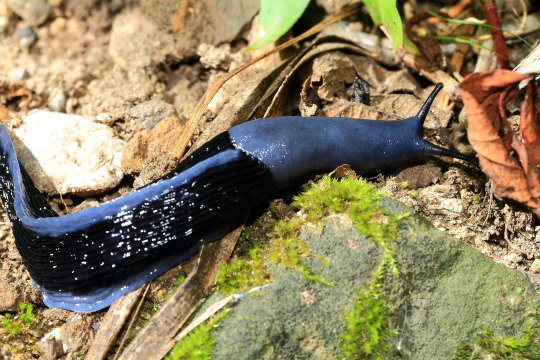#Eupulmonata
Explore tagged Tumblr posts
Text



🐌
263 notes
·
View notes
Text

#Arion ater#Arionidae#Gastropoda#Mollusca#Stylommatophora#Eupulmonata#Panpulmonata#Euthyneura#Heterobranchia#Animalia#gif#disapproving
0 notes
Text
Part II of my spec project Batrachiterra, this is a lesser post simply containing the seeded species list.
These are the frogs seeded, note that D. auratus represents the genus Dendrobates who also includes two other species.

Seeded species
Many species were added in order to make the planet habitable for human and frog colonists such as:
Photosynthetic organisms
Pinus spp.
Passiflora spp.
Bromelia spp.
Bryophytes
Algae
Lichens
Grasses
Fungi
Polyporales
Tuber spp.
Agaricus spp.
Suillaceae
Amanitaceae
Animalia
Isopoda
Oniscideans
Cirolanidae
Centipedes
Scolopendromorpha
Geophilomorpha
Millipedes
Oniscomorpha
Platydesmida
Polyzoniida
Siphonophorida
Diptera
Culicidae
Asilidae
Sialis spp.
Solenopsis spp.
Xylocopa spp.
Gastropoda
Eupulmonata
Systellomatophora
Styllomatophora
Oligochaeta
Cnidaria
Cubozoa
Scyphozoa
Cirripedia
Tunicata
Nematoda
Bacteria
Zooplankton
#worldbuilding#art#illustration#digital art#spec bio#frog#frogblr#spec evo#speculative biology#speculative zoology#speculative evolution#batrachiterra
42 notes
·
View notes
Photo

Kaputar slug (Triboniophorus sp. nov. 'Kaputar')
Photo by n.weigner
#kaputar slug#leaf veined slug#triboniophorus sp. nov. 'kaputar'#triboniophorus#aneitinae#athoracophoridae#athoracophoroidea#elasmognatha#succineoidei#stylommatophora#eupulmonata#panpulmonata#pulmonata#tectipleura#euthyneura#heterobranchia#gastropoda#mollusca#lophotrochozoa#beautiful species
20K notes
·
View notes
Photo


Macgillivray's Treesnail. Sadly, I can’t find much information on this species, but you can see a juvenile here
Rhynchotrochus macgillivrayi
18/05/22
#Rhynchotrochus macgillivrayi#Rhynchotrochus#Macgillivray's Treesnail#Mollusca#Hadrinae#Camaenidae#Helicoidea#Helicoidei#Helicina#Stylommatophora#Eupulmonata#Tectipleura#Euthyneura#Heterobranchia#Gastropoda#land snails#air-breathing snails#snails#molluscs#mollusks#bugblr#bugs#bug#bugs tw#insects#insectblr#insects tw#entomology#nature#nature photography
34 notes
·
View notes
Text

8/19/21
#land slug#animal#Arion spp.#mollusca#mollusk#Gastropoda#Heterobranchia#Eupulmonata#Stylommatophora#Arionidae#slug
5 notes
·
View notes
Photo

Fluorescent pink slug, unique to Australian mountaintop, survives bushfires | The Guardian
A fluorescent pink slug, found only on a single mountaintop in northern New South Wales, has survived the bushfires that burnt through much of its alpine habitat.
Around 60 of the brightly coloured Mount Kaputar slugs, which can grow to a size longer than a human hand, were spotted by National Parks and Wildlife Service rangers after recent rainfall in Mount Kaputar national park.
The Kaputar fire burnt through the area for more than six weeks from October to December 2019, affecting more than 18,000 hectares of land.
The mountain was formed by a now-extinct volcano, and is home to at least 20 species of snails and slugs found nowhere else in the world. The area has been identified as an endangered ecological community, the first of its kind in Australia.
Some of the fluorescent slugs would have managed to survive the fire because they had “retreated into rock crevices” in the heat, the Australian Museum malacologist Frank Köhler said.
But around 90% of the slug population, which also hibernates in bark and trees, would have been killed in the fire, he said.
Much of the slug’s food sources – fungi, moss and mould – would also have been burnt by the fire, but Köhler said these species should recover relatively quickly.
In coming months the slug might be at risk of being seen more easily in the burnt landscape by hungry birds and mammals, said Köhler, but the bright colour could also act as a warning to dissuade the predators.
#Kaputar Pink Slug#Triboniophorus nov kaputar#Triboniophorus#Athoracophoridae#Athoracophoroidea#Succineoidei#Helicina#Stylommatophora#Eupulmonata#Panpulmonata#Euthyneura#Heterobranchia#Gastropoda#Mollusca#slug#endangered#wildfire#Australia
306 notes
·
View notes
Text

#Arion vulgaris#spanish slug#poland#slug#animal#wildlife#nature#creative commons#arionidae#stylommatophora#eupulmonata#heterobranchia#gastropoda#mollusca
2 notes
·
View notes
Link
A teeny, tiny shell that turned up in a soil sample from China may belong to one of the world's smallest land snails, researchers report September 28 in ZooKeys.
Scientists surveying China's Guangxi region for small mollusks found seven new species of "microsnails," which have shells smaller than 5 millimeters. Among these, several small gray shells measured below a millimeter in height, but one shell stood out — at a mere 0.86 millimeters tall.
At that size, it could very well be home to the smallest known snail in the world. Though the scientists did not find any live specimens (a common problem when hunting for small mollusks), they hypothesize that the shell belongs to a novel species, dubbed Angustopila dominkae.
40 notes
·
View notes
Photo

Giant African Snail (Lissachatina fulica) Upper Bukit Timah Road, 11th November 2017
This Giant African Snail appears to have been crushed while it was on the pavement. The yellow spheres are eggs; this individual was gravid.
The Biodiversity of Singapore
The Tide Chaser: Terrestrial & Freshwater Gastropods (Snails & Slugs) of Singapore
Global Invasive Species Database
Invasive Species Compendium
Restricted Genetic Variation in Populations of Achatina (Lissachatina) fulica outside of East Africa and the Indian Ocean Islands Points to the Indian Ocean Islands as the Earliest Known Common Source
The Spread of the Snail Achatina fulica to South China
The Giant African Snail: A Problem in Economic Malacology
Giant African Snails: A Foreign Threat to U.S Agriculture
National Invasive Species Information Centre
Terrestrial Mollusc Tool
New York Invasive Species Information
Reproductive Ecology of the Giant African Snail in South Florida: Implications for Eradication Programs
ARKive
Animal Diversity Web
PetSnails.co.uk
#giant African snail#giant African land snail#Achatina fulica#Lissachatina fulica#Achatinidae#Achatinoidea#snails#land snails#Pulmonata#pulmonates#Stylommatophora#Eupulmonata#Heterobranchia#gastropods#molluscs#Bukit Timah#urban wildlife#introduced species#invasive species#human activities#Monday Morgue
0 notes
Photo


A collection of Beehive snails on a Citrus tree. First time I’ve come across a gathering of specimens.
Coneuplecta pampini Coneuplecta calculosa
28/05/22
#Coneuplecta#Coneuplecta pampini#Coneuplecta calculosa#beehive snails#hive snails#Euconulinae#Euconulidae#Trochomorphoidea#Limacoidei#Helicina#Stylommatophora#Eupulmonata#common land snails#Tectipleura#Euthyneura#Heterobranchia#Opisthobranchs#Gastropoda#gastropods#Mollusca#mollusks#molluscs#snails#bugs#bugs tw#bugblr
7 notes
·
View notes
Photo






Large Ganoderma fungus, with too little snail friends. I believe those strange patterns on the fungus are bite marks from snails.
Camaenidae (snail with shell) Helicarionidae (slug) Found on Ganoderma
18/05/22
#Camaenidae#Helicarionidae#Helicarionoidea#Limacoidei#Helicina#Stylommatophora#Eupulmonata#Mollusca#Gastropoda#Heterobranchia#Euthyneura#Tectipleura#common land snails#snailblr#snails#slugs#gastropods#molluscs#mollusks#fungi#fungus#ganoderm#Polyporaceae#Polyporales#Agaricomycetes#Agaricomycotina#mycology#Basidiomycota#shelf fungi#nature
11 notes
·
View notes
Photo


P. balios sitting on a leaf. Waiting for the rain to return.
Parmacochlea balios
18/05/22
#Parmacochlea balios#Parmacochlea#Helicarioninae#Helicarionidae#Helicarionoidea#Limacoidei#Helicina#Stylommatophora#Eupulmonata#Tectipleura#Euthyneura#Heterobranchia#Gastropoda#Mollusca#common land snails#slug#slugblr#slugs#gastropods#mollusks#molluscs#insectblr#bugblr#nature#nature photography
9 notes
·
View notes
Photo

Cute little snail cruising beside some Honeycomb slime mold.
Boriogenia hedleyi, identified through elimination by a land snail expert ❤
04/05/22
#land snails#Boriogenia hedleyi#Boriogenia#Hadrinae#Camaenidae#Helicoidea#Helicoidei#Helicina#Stylommatophora#Eupulmonata#Mollusca#Gastropoda#gastropods#molluscs#mollusks#Heterobranchia#Euthyneura#Tectipleura#Ceratiomyxa fruticulosa#honeycomb slime mold#bugs#bugblr#bugs tw#bug#insectblr#nature#natural#naturalist#nature photography
16 notes
·
View notes
Photo

Carpathian blue slug (Bielzia coerulans)
Photo by Alan Fenn
#carpathian blue slug#blue slug#bielzia coerulans#bielzia#limacinae#limacidae#limacoidea#limacoid clade#sigmurethra#stylommatophora#eupulmonata#panpulmonata#tectipleura#euthyneura#heterobranchia#gastropoda#mollusca#lophotrochozoa
277 notes
·
View notes
Photo

This shot’s a little over-exposed TBH.
Coneuplecta pampini
12/08/21
#Coneuplecta pampini#Pampin's Beehive Snail#Coneuplecta#Helicarionidae#Helicarionoidea#Limacoidei#Helicina#Stylommatophora#Eupulmonata#Tectipleura#Euthyneura#Heterobranchia#gastropoda#gastropods#snail#snails#nature#bugblr#insectblr#photography#amateur photography#mollusca#molluscs#mollusks#mollusc
39 notes
·
View notes